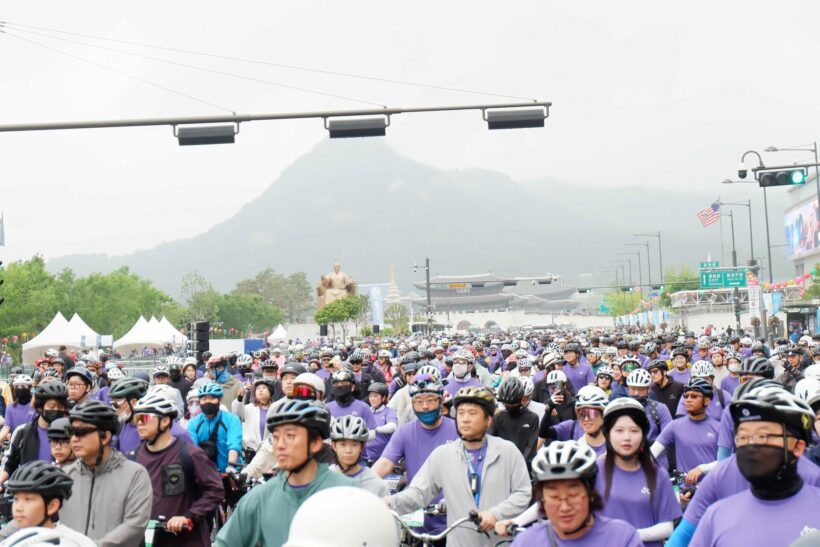Sunday morning, May 21, 2023. About 10,000 cyclists, from all over the country, flocked to Seoul’s main public square, Gwanghwamun, in Central Seoul at 8 a.m. for the annual Seoul Bike Festiva. The event was hosted by JoongAng Ilbo, a daily newspaper company, and JTBC, a South Korean nationwide television network, and sponsored by the city government of Seoul. The Seoul metropolitan government has been very active in investing, providing, and promoting projects related to cycling.

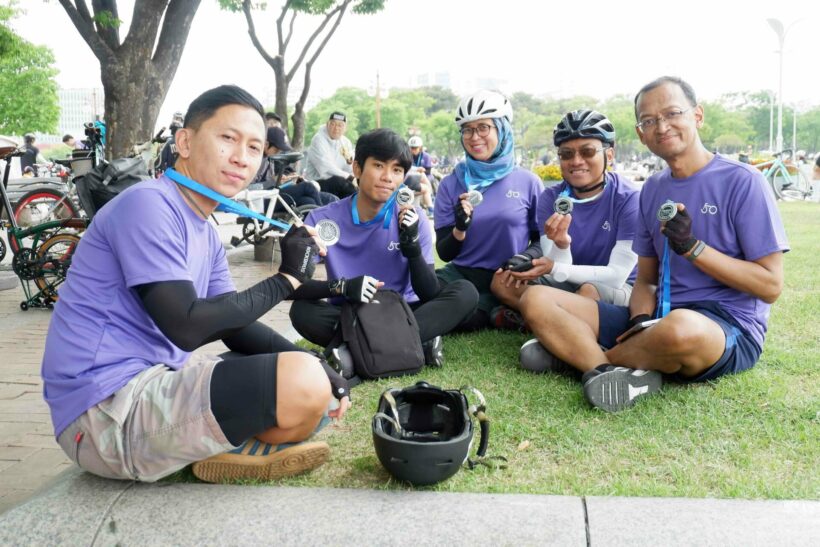
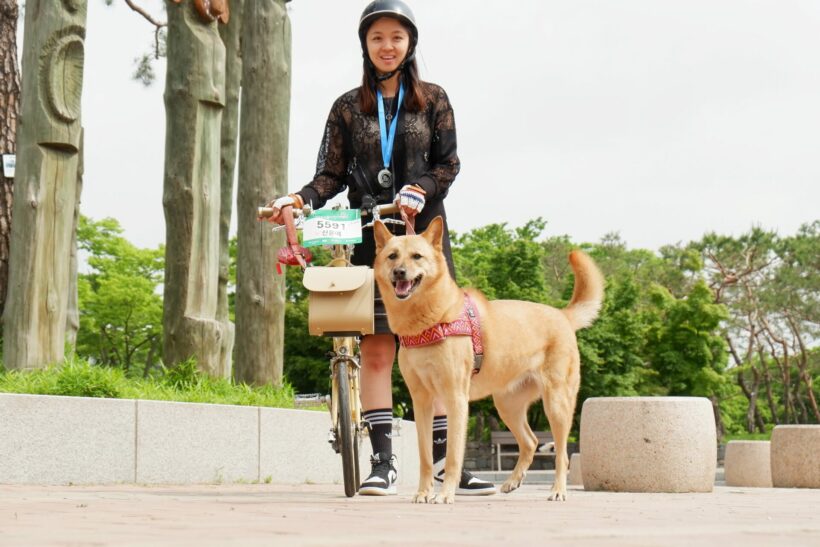
For years, one of the successful projects is Seoul Public Bike, known locally as Ttareungyi, for years. Ttareungyi is an unmanned rental system that can be conveniently used anywhere, anytime by anyone. In the vibrant city of Seoul, thousands of Taareungyi bikes are out there for public use. “The system was designed to resolve issues of traffic congestion, air pollution, and high oil prices in Seoul, and to build a healthier society while enhancing the quality of life for Seoul citizens.”, says the city’s official website.

Bereket Alemayehu and Mark Thorrowgood before the bike fest starts.
When I arrived at the square on my bike, about 10 km from my home, the morning sky was dark and cloudy, had sporadic showers of rain and it was a little chilly. Just before the kickoff sign, I met Mark Thorrowgood and had a little conversation about the festival. Mark Thorrowgood, 47, a New Zealander-Australian, is a keen cyclist who lived in Seoul for over seven years and now resides just outside of the city in Gyeonggido. Mark is the administrator of a popular Facebook group for Korea-based cyclists who have been promoting the Seoul Bike Fest in the group in the weeks leading up to the event.
The 21-kilometer-long (13-mile) Seoul Bike Festival parade kicked off from Gwanghwamun Square to World Cup Park, where the finishing line was, in Mapo District. The annual spring event was an urban bike parade where thousands of cyclists pedaled, a non-competitive sports event that hosted about 6,000 for a bike parade and 4,000 for free riding, through the downtown streets, along the Han River northern riverbank roads. The festival was designed to accommodate people between the ages of 10 and 80.

Cynthia Guzman, a mother of four children, was among the bikers with her husband. After finishing the 21km ride, when asked how did it go, she said, “It was absolutely awesome! This is the second time I have participated, my whole family has really enjoyed the atmosphere and allowing people who were not registered in. I wasn’t able to register both times, but I was still welcomed on the ride with open arms and a positive attitude. Everyone has always been very caring and supportive. I love getting the chance to ride with so many people from all over the country and see all the different bikes and costumes!”
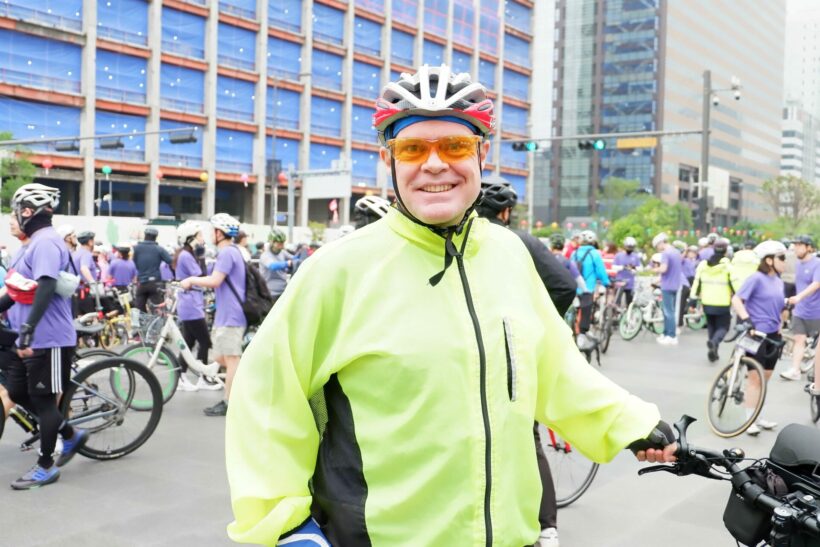
During his stay for seven years in Korea, Mark Thorrowgood, an admin for Korea Cycling Community, has observed the cycling culture and situations closely. “It’s always impressive to see the turnout for Seoul Bike Fest, as you realize just how popular cycling is as a recreational activity in Seoul and just how keen cyclists are to ride through parts of the city that they are not normally able to access. I’m also encouraged to see how many children and families are present.”
“While the Seoul Bike Fest offers local riders the chance to ride on roads that are usually full of traffic, the more important message, underscored by the presence of the Mayor of Seoul at the start line, sending the riders off with a wave, is that the city of Seoul is dedicated to supporting cycling. It’s great to see local government support for an activity that promotes the health not only of residents, but of the environment.”
“I have seen the Seoul government’s support for cycling in local infrastructure, as have many others. The Han River cycling paths have gone from strength to strength, as they have been rebuilt and upgraded over the years, and I ride them most weekends. It’s not just the river trails though. The cycling infrastructure in and around Jeongno—along the Cheongaecheong in particular—has been continuously improved. From what was a dedicated cycling lane shared with motorcycles and cars, to the present raised cycleway, physically separated from the road surface, the infrastructure in central Seoul continues to improve and to allow for safe journeys within the city by bicycle.
For Korea University students Ludovica Lucanto, Italy, and Maria Paula Villaverde, Argentina, the bike festival was their first ride.
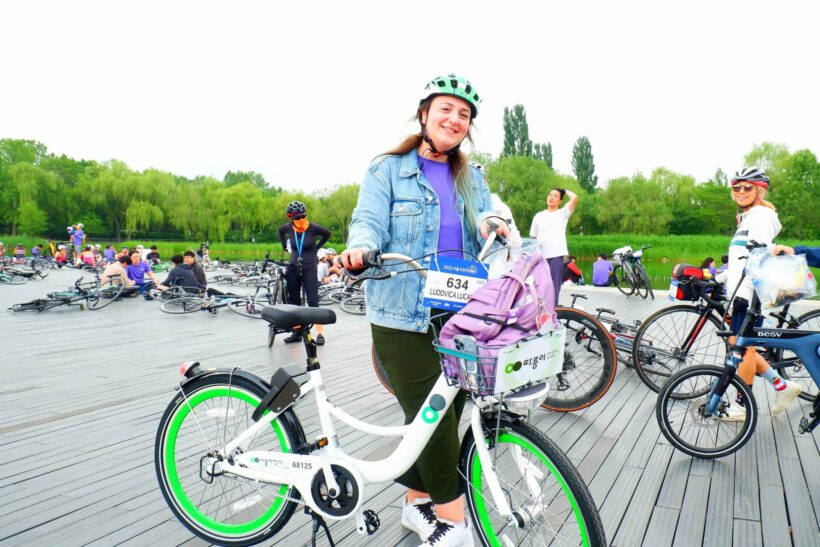
Lucanto, studying for a Master degree in international commerce, loves riding bicycles, so she made it to the finish line with a rented Taareungyi bike and got her medal.
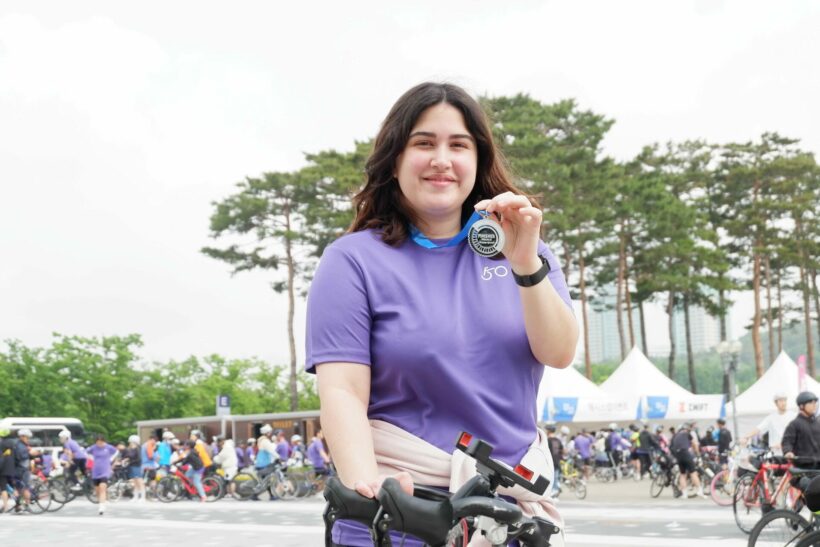
Maria Paula, who is studying Economics and International Studies for three years, commented that “I thought I would stop at one point but I did it, it was fun though there were hills, ascending ups, and descending downs along the way. A sort of respiring a lot. I commute by bike every time to go to school. I came to participate in the festival because there was an invitation on social media, for free for foreigners and students.
According to the UN information, June 3 is World Bicycle Day since 2018. On March 2022, the General Assembly adopted the resolution on the integration of mainstream bicycling into public transportation systems for sustainable development, acknowledging the uniqueness, longevity, and versatility of the bicycle, which has been in use for two centuries. It is a simple, affordable, reliable, clean and environmentally fit, sustainable means of transportation, fostering environmental stewardship and health.


